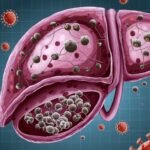Outline
| Main Topic | Subtopics |
| Understanding What is Depression? | 1. Definition of Depression 2. Historical Perspective on Depression 3. Difference Between Sadness and Depression |
| Types of Depression | 1. Major Depressive Disorder 2. Persistent Depressive Disorder (Dysthymia) 3. Bipolar Disorder 4. Seasonal Affective Disorder (SAD) 5. Postpartum Depression 6. Premenstrual Dysphoric Disorder (PMDD) 7. Situational Depression |
| Symptoms of Depression | 1. Emotional Symptoms 2. Physical Symptoms 3. Cognitive Symptoms 4. Social Withdrawal 5. Variability in Symptoms Across Individuals |
| Causes of Depression | 1. Genetic Factors 2. Biological Causes 3. Environmental Factors 4. Psychological Factors 5. Traumatic Life Events 6. Role of Hormones 7. Impact of Chronic Illness |
| Diagnosing Depression | 1. Medical Evaluation 2. Psychological Assessments 3. Diagnostic Criteria (DSM-5) 4. Role of Self-Assessment Tools 5. The Importance of Early Diagnosis |
| The Impact of Depression on Daily Life | 1. Work and Productivity 2. Relationships and Social Life 3. Physical Health 4. Quality of Life 5. Depression in Children and Adolescents 6. Depression in the Elderly |
| Treatment Options for Depression | 1. Psychotherapy (Talk Therapy) 2. Medication 3. Lifestyle Changes 4. Alternative Treatments (e.g., Meditation, Acupuncture) 5. Importance of a Support System 6. Managing Depression Long-term |
| Overcoming the Stigma Around Depression | 1. Social Stigma 2. Self-Stigma 3. Role of Education and Awareness 4. Support Groups and Community Resources |
| Living with Depression | 1. Strategies for Daily Coping 2. Building Resilience 3. Maintaining Relationships 4. Preventing Relapse 5. Finding Hope and Optimism |
| FAQs | 1. What are the early signs of depression? 2. How is depression diagnosed? 3. Can depression go away on its own? 4. What are the most effective treatments for depression? 5. How can I help someone with depression? 6. Is depression hereditary? |
Understanding What is Depression?
Depression is often misunderstood, relegated to mere feelings of sadness or gloom. However, depression is far more complex—a pervasive mental health disorder that can significantly disrupt a person’s life. Defined clinically, depression is a mood disorder characterized by persistent feelings of sadness, hopelessness, and a lack of interest or pleasure in daily activities. Unlike fleeting bouts of melancholy that everyone experiences, depression is a severe condition that requires attention, understanding, and, often, medical intervention.
To better understand depression, it’s essential to consider its impact over time and across different cultures. Historically, depression has been documented in various forms, with different societies attributing it to spiritual causes, bodily humors, or imbalances in personal or societal health. Today, modern psychology and medicine recognize depression as a complex interplay of genetic, biological, environmental, and psychological factors.
The Difference Between Sadness and Depression
It’s crucial to differentiate between sadness and depression. Sadness is a natural emotional response to situations that are challenging, frustrating, or disappointing. It usually passes with time and is often proportional to the situation that caused it. Depression, on the other hand, is a persistent state that doesn’t necessarily correlate with specific life events. People with depression may feel sad or hopeless for no apparent reason, and these feelings can last for weeks, months, or even years, affecting their ability to function in daily life.

Types of Depression
Major Depressive Disorder
Major Depressive Disorder (MDD), often simply called depression, is characterized by a persistent feeling of sadness or a lack of interest in outside stimuli. This condition can significantly impact an individual’s ability to carry out daily tasks. MDD can occur as a single episode or be recurrent throughout a person’s life.
Persistent Depressive Disorder (Dysthymia)
Persistent Depressive Disorder, or dysthymia, is a chronic form of depression. Unlike MDD, the symptoms of dysthymia are less severe but longer-lasting, often for two years or more. Individuals with dysthymia may function day-to-day but struggle with a consistently low mood, leading to feelings of inadequacy, guilt, and irritability. The persistent nature of this disorder makes it particularly challenging, as it can go unnoticed or be dismissed as mere “moodiness.”
Bipolar Disorder
Bipolar Disorder is a mood disorder that includes episodes of depression and mania—periods of excessively elevated mood or irritability. During depressive episodes, individuals experience the typical symptoms of major depression. However, these are interspersed with manic or hypomanic episodes, where they might feel overly energetic, euphoric, or irritable. Bipolar Disorder requires careful management, often involving a combination of medication and therapy.
Seasonal Affective Disorder (SAD)
Seasonal Affective Disorder (SAD) is a type of depression that occurs at specific times of the year, usually in the winter when daylight hours are shorter. The lack of sunlight can disrupt the body’s internal clock, leading to feelings of depression. Symptoms of SAD are similar to those of other forms of depression but are tied to the seasonal calendar. Light therapy is a common treatment for SAD, helping to regulate mood and energy levels by mimicking natural sunlight.
Postpartum Depression
Postpartum Depression affects women after childbirth. It is more severe than the typical “baby blues” that many new mothers experience. Symptoms include severe mood swings, fatigue, and feelings of hopelessness, which can make it challenging to care for the newborn. Postpartum Depression is believed to be linked to hormonal changes after childbirth, combined with the physical and emotional demands of caring for a new baby.
Premenstrual Dysphoric Disorder (PMDD)
Premenstrual Dysphoric Disorder is a severe form of premenstrual syndrome (PMS). It causes extreme mood shifts that can disrupt work and damage relationships. PMDD is often managed through lifestyle changes, medication, and therapy.
Situational Depression
While it shares many symptoms with other forms of depression, it is usually temporary and directly related to a particular situation. Once the individual adapts to the new circumstances, the symptoms often diminish.
Symptoms of Depression
Emotional Symptoms
Depression’s emotional symptoms are often the most debilitating. They include persistent sadness, feelings of hopelessness, and a pervasive sense of worthlessness or guilt. Individuals may lose interest in activities they once enjoyed, struggle with motivation, and find it difficult to experience pleasure. Anxiety often accompanies depression, further compounding the emotional burden.
Physical Symptoms
Depression doesn’t just affect the mind; it also takes a toll on the body. Common physical symptoms include changes in appetite and weight (either gain or loss), sleep disturbances such as insomnia or oversleeping, and fatigue. Some individuals experience unexplained aches and pains, headaches, or digestive issues. These physical symptoms can often mask the underlying depression, leading to misdiagnosis.
Cognitive Symptoms
Cognitive symptoms of depression involve difficulties with concentration, memory, and decision-making. Individuals may find it hard to focus on tasks or retain information, which can impact their performance at work or school. Social Withdrawal
A hallmark symptom of depression is social withdrawal. People may start to isolate themselves from friends and family, avoiding social interactions and activities they once enjoyed. This isolation can exacerbate feelings of loneliness and despair, creating a vicious cycle that deepens the depression.
Variability in Symptoms Across Individuals
It’s important to note that depression manifests differently in different people. Some might experience primarily physical symptoms, while others may struggle more with cognitive or emotional challenges. The variability in symptoms can make depression difficult to recognize, both by the individuals suffering from it and by those around them.
Causes of Depression
Genetic Factors
Depression often runs in families, suggesting a genetic component. Research has identified specific genes that may increase susceptibility to depression, although no single gene is responsible. Instead, a combination of genetic factors likely contributes to an individual’s risk. This genetic predisposition, when combined with environmental stressors, can trigger the onset of depression.
Biological Causes
Biological factors play a significant role in depression. Neurotransmitters, the brain chemicals that regulate mood, such as serotonin, dopamine, and norepinephrine, are often imbalanced in individuals with depression. Hormonal changes, particularly those related to thyroid function or during periods such as pregnancy, can also contribute to the development of depression.
Environmental Factors
Environmental stressors, such as a traumatic life event, chronic stress, or ongoing conflict, can trigger depression in individuals who are predisposed to the disorder. Socioeconomic factors, including poverty and unemployment, are also significant contributors. Environmental factors can affect depression’s onset, severity, and duration.
Psychological Factors
Psychological factors, including personality traits like low self-esteem or a pessimistic outlook, can increase the risk of depression. People who have a history of trauma, abuse, or significant loss are more likely to develop depression. Additionally, individuals with a history of other mental health disorders, such as anxiety, are at an increased risk.
Traumatic Life Events
Events such as the death of a loved one, a severe accident, or abuse can lead to depression. The impact of these events can be long-lasting, and they may trigger a depressive episode months or even years after the event occurred.
Role of Hormones
Hormonal imbalances are a well-known cause of depression. This is particularly evident in conditions such as postpartum depression, where the rapid hormonal changes after childbirth contribute to the disorder. Other hormonal disorders, such as hypothyroidism, can also cause depressive symptoms.
Impact of Chronic Illness
Living with a chronic illness, such as heart disease, diabetes, or cancer, can increase the risk of depression. The constant physical pain, limitations, and emotional toll of managing a long-term illness can lead to feelings of hopelessness and despair.
Diagnosing Depression
Medical Evaluation
Diagnosing depression typically begins with a comprehensive medical evaluation. Doctors will assess the patient’s overall health to rule out other conditions that might be causing symptoms, such as thyroid disorders or vitamin deficiencies. Blood tests, physical exams, and detailed discussions about symptoms help in identifying depression.
Psychological Assessments
Psychological assessments are crucial in diagnosing depression. These may involve structured interviews or questionnaires that help determine the severity and nature of depressive symptoms. Commonly used tools include the Beck Depression Inventory (BDI) and the Hamilton Depression Rating Scale (HDRS).
Diagnostic Criteria (DSM-5)
According to DSM-5, an individual must exhibit at least five symptoms of depression for two weeks or more, with at least one symptom being either a depressed mood or loss of interest in activities.
Role of Self-Assessment Tools
Self-assessment tools, such as online quizzes or apps, can be useful in identifying depression early. While these tools should not replace professional diagnosis, they can provide insight and prompt individuals to seek further evaluation from a healthcare provider.
The Importance of Early Diagnosis
Early diagnosis of depression is crucial for effective treatment. The longer depression goes untreated, the more severe it can become, leading to a greater risk of complications such as substance abuse or suicidal behavior. Early intervention can prevent these outcomes and improve the overall prognosis.
The Impact of Depression on Daily Life
Work and Productivity
Depression significantly affects work and productivity. Individuals may find it challenging to concentrate, meet deadlines, or maintain the energy levels required for their job. This can lead to decreased performance, absenteeism, and even job loss, further exacerbating feelings of inadequacy and financial stress.
Relationships and Social Life
The social withdrawal, irritability, and lack of interest in social activities that often accompany depression can lead to misunderstandings and conflicts. Loved ones may feel helpless or frustrated, not knowing how to support the person with depression.
Physical Health
The physical symptoms of depression, such as changes in sleep patterns, appetite, and energy levels, can lead to a decline in overall physical health. Chronic fatigue, pain, and other physical issues can develop or worsen as a result of untreated depression.
Quality of Life
The cumulative effect of depression on mental, physical, and social well-being can severely reduce the quality of life. Individuals may find it hard to enjoy activities, maintain relationships, or feel hopeful about the future, leading to a pervasive sense of despair.
Depression in Children and Adolescents
Depression in children and adolescents is often overlooked or misdiagnosed. Symptoms in younger individuals may present differently than in adults, with irritability, academic decline, and behavioral issues often being the primary indicators. Early intervention is crucial for preventing long-term psychological issues.
Depression in the Elderly
Depression in the elderly is frequently mistaken for a normal part of aging. However, it is a serious condition that can significantly impair the quality of life. Elderly individuals may be less likely to express feelings of sadness, instead showing signs through physical symptoms, cognitive decline, or social withdrawal.
Treatment Options for Depression
Psychotherapy (Talk Therapy)
Psychotherapy, often referred to as talk therapy, is a cornerstone in the treatment of depression. Cognitive Behavioral Therapy (CBT) is particularly effective, in helping individuals identify and change negative thought patterns and behaviors. Other forms of therapy, such as Interpersonal Therapy (IPT) and Dialectical Behavior Therapy (DBT), are also beneficial.
Medication
Antidepressant medications are commonly prescribed for depression. Selective serotonin reuptake inhibitors (SSRIs) like fluoxetine, serotonin and norepinephrine reuptake inhibitors (SNRIs), and tricyclic antidepressants are some examples. Lifestyle Changes
Incorporating lifestyle changes can significantly improve symptoms of depression. Regular exercise, a healthy diet, sufficient sleep, and reducing alcohol or drug use can all help. Mindfulness practices, such as meditation and yoga, are also beneficial in managing stress and improving mood.What is Depression, Understanding Depression, Depression Causes, Depression Treatment
Alternative Treatments
Alternative treatments, including acupuncture, herbal supplements, and meditation, are sometimes used to complement traditional treatments for depression. While these methods may not replace conventional treatment, they can provide additional relief for some individuals.
Importance of a Support System
Having a strong support system is crucial for individuals with depression. Friends, family, and support groups provide emotional backing, encouragement, and a sense of belonging, which are vital for recovery. Support groups also offer the benefit of shared experiences, reducing the feeling of isolation.
Managing Depression Long-term
Managing depression is often a lifelong process. It requires ongoing treatment, self-awareness, and regular check-ins with healthcare providers. Building resilience, recognizing early signs of relapse, and maintaining a healthy lifestyle are key to preventing future depressive episodes.
Overcoming the Stigma Around Depression
Social Stigma
The social stigma surrounding depression remains a significant barrier to seeking help. Misconceptions about mental illness, fear of judgment, and societal expectations can prevent individuals from acknowledging their depression or seeking treatment. What is Depression, Understanding Depression, Depression Causes, Depression TreatmentCombatting stigma through education and open dialogue is crucial for changing public perceptions.
Self-Stigma
Self-stigma occurs when individuals internalize negative stereotypes about depression, leading to feelings of shame or guilt. This can prevent them from seeking help or adhering to treatment. Addressing self-stigma involves fostering self-compassion and recognizing that depression is a medical condition, not a personal failure.
Role of Education and Awareness
Education and awareness are powerful tools for reducing the stigma associated with depression. By increasing public understanding of what depression is, how it affects people, and the importance of treatment, we can foster a more supportive and informed society.
Support Groups and Community Resources
Support groups and community resources play a vital role in overcoming the stigma of depression. These resources provide a safe space for individuals to share their experiences, receive support, and connect with others who understand their struggles. What is Depression, Understanding Depression, Depression Causes, Depression Treatment Community programs can also offer education and advocacy to promote mental health awareness.
Living with Depression
Strategies for Daily Coping
Living with depression requires practical strategies for daily coping. This might include establishing a routine, setting small, achievable goals, practicing mindfulness, and engaging in regular physical activity. Keeping a journal or finding creative outlets for expression can also help manage symptoms.
Building Resilience
Resilience is the ability to bounce back from adversity, and it can be strengthened through intentional practice. Building resilience involves developing a positive mindset, fostering supportive relationships, and learning to navigate challenges with grace and determination.
Maintaining Relationships
Maintaining relationships while managing depression can be challenging, but it is essential for recovery. Open communication, setting boundaries, and involving loved ones in the treatment process can help maintain and strengthen these connections.
Preventing Relapse
Preventing relapse is a critical aspect of managing depression. This involves ongoing therapy, medication management, and lifestyle adjustments. Recognizing early warning signs and having a plan in place can prevent the recurrence of depressive episodes.
Finding Hope and Optimism
Despite the challenges, it is possible to find hope and optimism while living with depression. Focusing on small victories, practicing gratitude, and surrounding oneself with positive influences can help shift perspective and foster a sense of hope.
FAQs
What are the early signs of depression?
Early signs of depression include persistent sadness, loss of interest in activities once enjoyed, changes in appetite, sleep disturbances, What is Depression, Understanding Depression, Depression Causes, Depression Treatment, and fatigue. Other signs might include difficulty concentrating, feelings of hopelessness, and thoughts of self-harm or suicide.
How is depression diagnosed?
Depression is diagnosed through a combination of medical evaluations, psychological assessments, and discussions about symptoms. Healthcare providers may use diagnostic tools like the DSM-5 criteria and often rule out other medical conditions that could be causing symptoms.
Can depression go away on its own?
While mild cases of depression might improve over time, it’s important to seek treatment. Depression can worsen if left untreated, and early intervention can prevent it from becoming more severe or chronic.
What are the most effective treatments for depression?
Effective treatments for depression typically include a combination of psychotherapy, medication, and lifestyle changes. Cognitive Behavioral Therapy (CBT) and antidepressants are commonly used, but the best treatment varies depending on the individual.
How can I help someone with depression?
You can help someone with depression by offering support, encouraging them to seek professional help, and being patient. It’s important to listen without judgment, offer practical help, and stay connected with them, even if they withdraw socially.
Is depression hereditary?
Depression can be hereditary, meaning it often runs in families. However, genetics is just one factor and environmental and psychological factors also play significant roles in its development.
Conclusion
Depression is a complex, multifaceted disorder that affects millions of people worldwide. Understanding what depression is, its types, symptoms, and causes, is crucial for recognizing it and seeking appropriate treatment. By addressing the stigma associated with depression and offering effective treatment options, individuals can manage their symptoms and lead fulfilling lives. It is vital to continue educating ourselves and supporting those who struggle with this condition, fostering a society that is compassionate and informed. What is Depression, Understanding Depression, Depression Causes, Depression Treatment




